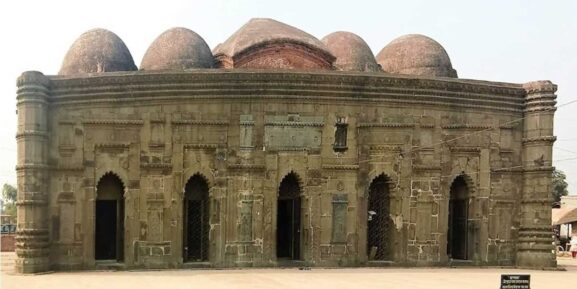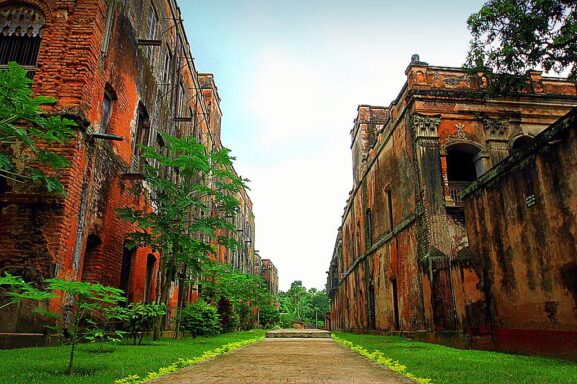Kuakata, daughter of the ocean
Kuakata, also known as “Sagar Kanya”, which means “Daughter of the sea”, is a picturesque traveler’s delight. It is located in the Latachapali union of Kalapara Upazila of Patuakhali district in the southern part of Bangladesh. Kuakata is one of the most beautiful and attractive places for visitors and occasional travelers. It is now well-known throughout the world, not just in the nation. Kuakata is the only beach in South Asia where you can enjoy the sunrise and sunset. The view of the sunrise and sunset from the beach is a treat for the eyes to watch. It is well known for its outstanding natural beauty. Apart from endless beautiful beaches, Kuakata has many other attractions to visit.
The beach
Kuakata beach is very clean. Due to its geographical location, only sunrise and sunset views can be enjoyed from this beach. Sunrise is best seen from Gangamati bend at the eastern end of the beach. And the best place to watch the sunset is Kuakata’s West Beach.
Kuakata beach is about 18 km long. There are long rows of coconut trees all along the beach. However, climate change has also affected this forest. This beautiful coconut garden has been affected by erosion due to the rise in the height of the sea tide at different times. Kuakata Beach can be seen all year round with fishermen fishing.
Dried fish village / Shutki Palli
At the western end of Kuakata Beach is the fishing village. Many fishermen live here. From November to March, the work of making shutki (dried fish) is mainly done here. Fishermen bring fish from the sea and make shutki (dried fish) on the beach. Good quality of shutki (dried fish) is also available here at low prices.
Gangamati forest
Kuakata’s beach ends at the Gangamati canal to the east. Gangamati jungle starts from here. Many people call it the Jungle of Gazmati. Apart from different types of trees, there are different types of birds, forest chickens, monkeys, etc. in this forest.
Crab Island
To the east of Kuakata Beach, beyond the jungles of Gangamati, lies Crab Island. Red crabs live in this place. If you get solitude, the beach of this place is red with groups of crabs. Crab Island can be reached by speed boat from Kuakata Beach during the tourist season (October-March).
Fatra forest
Just across the river on the western side of Kuakata beach is the breathtaking forest of the Sundarbans, its Fatra Forest. Although most of the Sundarban’s quality is in this forest, there are no such wild animals. There are forest roosters, monkeys, and various birds in this forest. Wild boars are rarely seen in this forest. You have to go to Fatra forest from Kuakata by engine boat.
Kuakatar Kua
The well that is behind the history of naming Kuakata still survives. However, its beauty has been lost due to short-sighted and ugly renovations a few years ago. An ancient well is located at the beginning of Keranipara, a Rakhine settlement near Kuakata Beach.
Legend has it that in 1784 when the Burmese king occupied Arakan, the motherland of the Rakhines, many Rakhines left the place and sought refuge by boat. On the way, they found Rangabali Island on the shores of the Bay of Bengal and settled there. They dug a well here for freshwater as the salty sea water was unusable. Henceforth the place came to be known as Kuakata (cutting well).
Seema Buddhist temple
Seema Buddhist temple is in front of the ancient well of Kuakata. This wooden temple was demolished a few years ago. However, inside the temple, there is still an ancient Buddha image weighing about 37 maunds made of octahedron metal.
Keranipara
In front of Seema Buddhist Temple is Keranipara, the residence of Rakhines, a small ethnic group. The main occupation of Rakhine women here is weaving. The winter cloaks made by the Rakhines are quite interesting.
Misripara Buddhist Temple
Misripara is a village eight kilometers from Kuakata Beach, where most of the villagers are Rakhine. There is a big Buddhist temple here. It is said that the largest Buddha statue on the subcontinent is inside this temple. Apart from this, the largest Rakhine settlement in the region is in Amkhola village, a little far from here.
How to go/Trip Plan
The distance from Dhaka to Kuakata is almost around 350 KM, which takes about 9 hours to reach by direct bus and about 10 hours via launch. But people choose launch over the bus for its aesthetics and pleasing experience, and it’s safer too. The easiest way to travel is from Sadarghat in Dhaka by launch to Patuakhali, from there by bus to Kuakata. Various launches of Greenline water bus, Sundrbon, Surovi, Parabat, MV Kirtonkhola, Sirajdikhan go from Dhaka’s Sadarghat to Patuakhali.
Kuakata has bus service from Kuakata inter-district bus terminal. Besides, Sakura Paribahan, Kuakata Exress, Surabhi Paribahan, Hanif Enterprise buses go to Kuakata from Gabtali bus station in Dhaka. Besides, Kuakata bus departs from Kamalapur BRTC depot every morning and night.
Post By: Md azizul Hakim Emon
To know more about Shuvolong Waterfall click here




Pingback: Bisnakandi - Traveling BD